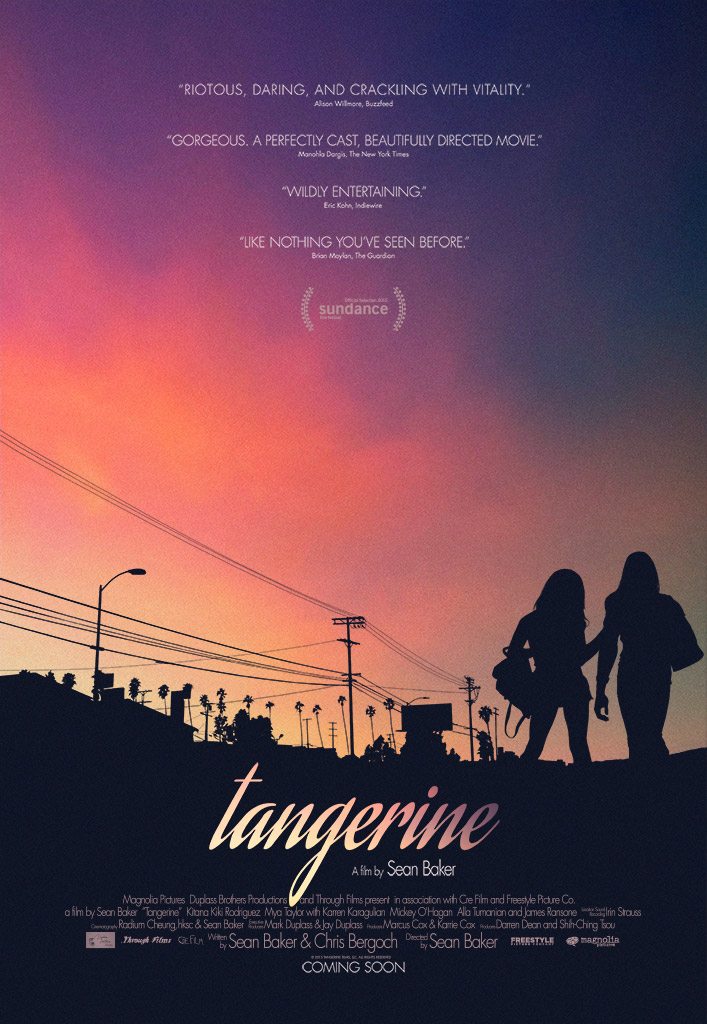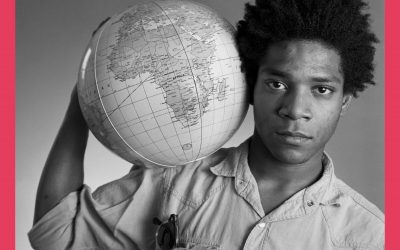I first met Sean Baker at a friend’s birthday party about a decade ago, and was amazed that I was talking to a co-creator of the Fox series Greg The Bunny. In getting to know Sean a little bit over the next few years, I got to learn more about Greg getting a new life as a series for IFC. Ultimately, I had the opportunity to appear as an extra in one of Sean’s films, Prince Of Broadway.
When Sean re-located to Los Angeles, we lost touch. But when my co-worker Neil Donahue turned me on to the movie Starlet last year, as then found on Netflix, I was delighted to see that Sean had co-written and directed that film. Fast forwarding to 2015, I recently heard Sean on author Bret Easton Ellis’ podcast discussing his latest feature, Tangerine, as produced by the Duplass Brothers. I decided that it was time to re-connect with Sean, and luckily, he was interested in answering questions for a “Really Busy People” column.
Sean is not only one of the most creative people I have encountered, yet also one of the hardest-working. His DIY-rooted work ethic is both admirable and inspiring. His “last words” ought to ring true for all readers of Downtown, no matter their career path.
What do you wish more people knew about independent filmmaking?
Sean Baker: I wish the general public would know that just because a film is released in theaters, it doesn’t mean the filmmakers are getting rich, or even making money. Quite the contrary, actually. Sometimes it’s causing the filmmaker to go into massive debt. Even when the box office appears strong, it’s a rarity that any money will trickle down to the people who actually made the film. The theater has to take a cut. Then the distributor has to make back the money they spent on the film. Then the financiers have to be paid back plus their premium. Then usually crew and cast are being paid their points or deferred payments. So in the end, producers, writers and directors are rarely seeing money. Independent filmmaking has fallen in to the hobby category. It certainly cannot sustain a living, even for someone with no dependents.
A lot of people just think that the director is the person giving direction and yelling “cut” on the set. What else do you usually do as a director?
S: I’m very much involved with almost every aspect of the filmmaking process. And it’s not exactly because I want to be. Low budgets require that filmmakers wear many hats. It isn’t just me. My producers often have to cover several positions as well. So I’m often casting, location-scouting, involved in the camera department if necessary and always editing. I consider editing to be 50 percent of directing.
You studied at NYU Film School. Nowadays, does a person truly have to go to a film school to make great movies?
S: I don’t think so. I think an aspiring filmmaker has to volunteer and work on film sets as much as possible. Plus watching films is a major part of a film education. You have to watch all types of films, good ones and bad ones of all genres and nationalities. Plus, listen to filmmakers speak on podcasts, DVD commentaries and online interviews…very important to hear war stories.
After growing up in New Jersey and spending years working in New York, what prompted your move out west? What does living in Los Angeles offer that you didn’t get on the East Coast?
S: I moved out west because I had fallen in love with L.A. and out of love with New York. There is a growing indie scene in L.A., plus the cost of living is lower and the quality of life is higher. I had enough of New York winters as well. After moving here, I realized I had tortured myself for years.
What was your first paying gig in the film world?
S: If you define film world as the broad world of the audiovisual medium, then it was shortly after graduating NYU. I had a job at a publishing house in which I was shooting and editing promotional videos and small commercials. If you are speaking of cinema, then the first time I was paid to direct was Starlet, which was twenty years after graduation. Of course I had Greg The Bunny, a television show that I co-created, which kept me afloat for many years.
Greg The Bunny was one of the first shows to get cancelled by a network and then revived by a cable network. Looking back, how do you view the legacy of Greg?
S: I thank my lucky stars I was involved with Greg The Bunny. I look back at those times with fond memories. And as I said, it really kept me afloat over the years. Ultimately we had five incarnations: public access, IFC, FOX, then back to IFC and then a spin-off on MTV. It was so formative and truly helped me understand how to find the right comedic pace for scenes and set pieces. Everything I learned from directing improvisational comedy on GTB, I apply to the films I make today.
How would you describe your latest film, Tangerine, to someone who hasn’t yet seen it?
S: A comedy about family, friendship and infidelity set on Christmas Eve on the intersection of Santa Monica Boulevard & Highland Avenue in Hollywood, California.
Tangerine was entirely filmed using iPhones. Where did they idea come from?
S: I made this film on the iPhone because we had a tiny budget. Every time I make a new film, I try to increase my budget. I couldn’t do so this time so we decided to explore other camera options to save money. I found a Vimeo channel that focused on iPhone short films and was quite impressed. I discovered a Kickstarter campaign for a company called Moondog Labs that created an anamorphic adapter for the lens of the iPhone. It allows you to shoot iPhone footage in true scope – wide accept ratio. We also used an app called Filmic Pro; it captures the footage at a higher quality compression rate and shots at 24 frames a second. These tools convinced me that we could elevate iPhone footage to a cinematic level. So this all began as a budgetary solution but ended up becoming something more than that.
Are you entirely reliant on Apple products for all of your creative projects?
S: I’m certainly reliant on my Mac Book Pro and Final Cut Pro. But those are the only tools that I’m absolutely reliant on from Apple.
Is there an app or tool you use most to stay productive and on-task?
S: Google Drive is something that is becoming more important by the day. Chris Bergoch, co-writer of Starlet and Tangerine, and I write and share ideas though Google Drive. It’s also becoming the place where we share and store film production-related documents. Genius Scan has become very important. And of course, Google Calendar.
Once you’re done promoting Tangerine, what is planned for you? Do you usually have one or two projects planned while a movie is being promoted?
S: I’m trying to get a new film off the ground. It will stay in the same wheelhouse but hopefully be a larger budget. Yes, always a couple of projects being considered. The sad part is that you can fall out of love with projects that you spent years thinking about. So I’m trying to get this one moving before I fall out of love.
When you’re not working, what do you like doing with yourself?
S: I see one film a day, which is sometimes a distraction, but I’m an addict. Also, I try to stay healthy and in shape…and this is because once production takes over, that lifestyle gets thrown out the window. I see it as being in training in order to tackle production. I like to explore, taking advantage of the film festival travel and when I’m home, exploring the outskirts of L.A., the desert cities and valleys. Lately, I’ve been drawn to the San Bernardino Valley.
Finally, Sean, any last words for the kids?
S: Doors don’t open for you. You have to force them open. Also, don’t be deterred by naysayers. Naysayers will continue to naysay even after you’ve proven them wrong.
-by Darren Paltrowitz















